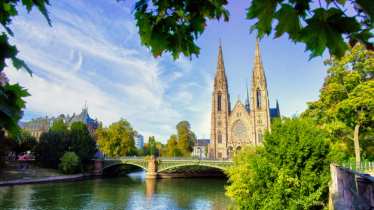
- Destinations
- Strasbourg
Strasbourg city breaks

Strasbourg holidays and city breaks
Strasbourg and its region, Alsace, have bounced back and forth between France and Germany over the centuries so everything, from the half-timbered architecture to the food and drink, has influences of both countries.
Any visit to Strasbourg is like stepping into the pages of a fairy tale, it’s Hansel and Gretel without the Grimm - magical, beautiful and historic. If you really want to ramp up the medieval romance, visit around Christmas when the city is draped in fairy lights and the streets are taken over by one of the best Christmas markets in Europe.
The centre of the town is pretty small, mainly contained to the Grand Ile, an island bounded on one side by the Ill river and on the other by a canal. This compactness makes it the perfect destination for a long weekend, when you don’t want to travel too far, but you’d like a total change of scenery and pace. The whole of the island itself is a UNESCO World Heritage site, so don’t forget your camera.
Top 5 things to do and see in Strasbourg
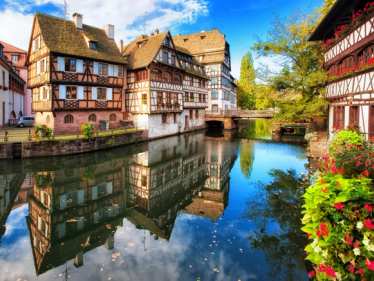
Petit France quarter
This district, south west of the city centre, is one of the prettiest and most charming parts of this already remarkably photogenic town. Originally the part of the city lived in by tradesmen, the sloping roofs of the half-timbered buildings conceal large open lofts where 16th and 17th century tanners hung their hides to dry.
The narrow, cobbled streets are bisected by the river and linked by flower-festooned footbridges. It’s all just so pretty, every street is a photo waiting to be taken. Wear your most comfortable shoes though, as you’ll want to walk around for hours
When you are completely exhausted, or you run out of camera battery, there are plenty of bars and restaurants along the river where you can sit and drink in the view over a glass of beer or a local Gewurztraminer.
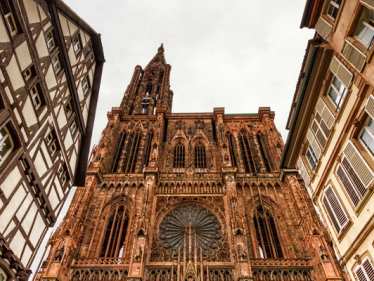
Strasbourg Notre Dame Cathedral
Strasbourg cathedral is a work of art, heavily decorated with ornate carvings that narrate life in the Middle Ages. Soaring impressively above the roofs of the surrounding houses, the cathedral is the tallest church in France and one of the finest examples of gothic architecture in Europe
The inside doesn’t disappoint either, with magnificent stained glass windows dating back as far as the 12th century, 17th century tapestries, an ornate painted organ and an amazing astronomical clock. The clock performs at solar noon (12:30 in winter) so, if you want to see it in action, be in the cathedral at least half an hour beforehand as they shut the doors when it is full, don’t worry there is plenty to see while you are waiting.
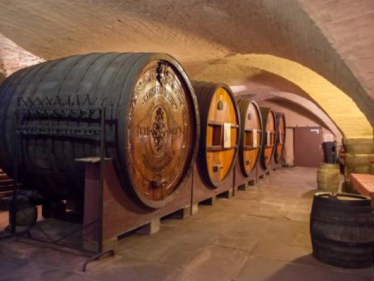
Cave Historique des Hospices de Strasbourg
This is definitely a first – going to hospital for a glass of wine. Strasbourg’s main city hospital was founded in 1395 and, back then, people couldn’t always afford to pay cash for medical treatment so they paid with wine.
All the donations of wine were stored in the hospital’s cellar and, up until the 19th century, every patient was allowed two litres of wine a day.
The cellar is now a wine museum with 40 barrels of very old wine, including one from 1472, said to be the oldest white wine in the world. There are also more recent wines, all from Alsace which can be tasted and bought at the museum. Entry is free and it’s well worth a visit.
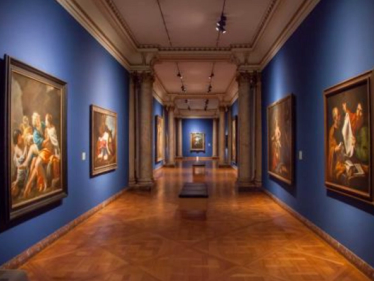
Palais Rohan
There is something for everyone in this magnificent Parisian-style mansion, formerly the residence of the Bishop of Strasbourg. The Museum of Archaeology, the Fine Arts Museum and the Museum of Decorative Arts are all under the same roof, making it the perfect place to visit if the weather is bad.
The Museum of Decorative Arts is on the ground floor, along with the spectacularly lavish apartments of the Cardinals of Rohan, well worth a visit to see how the other half live. The first floor is taken up by the Museum of Fine Arts with a good collection of Flemish and European art. In the basement you’ll find the Museum of Archaeology with an extensive collection of exhibits from Neolithic to Merovingian.
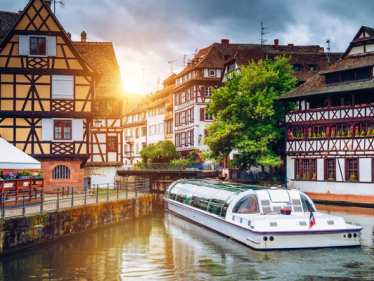
Boat tours
The centre of town is so compact you can do a boat tour around it in just over an hour. Boats leave from near the Palais Rohan and take you around the Grand Ile, past most of historic Strasbourg, passing through Petite France and going through two river locks in the process.
It also takes you past the modern European district where the European Parliament and other administrative buildings are located.
A boat tour is a great way to get a different view of the city and, if you’re tired from walking around, it gives you a chance to sit back and relax while seeing the town. The tours run less frequently in winter and you can choose between open or covered boats if you feel the cold. In peak season buy your ticket in advance as boats fill up quickly.
Local dishes to try in Strasbourg
Traditional food in Alsace is heavily influenced by German cuisine, mainly focused on meat, especially pork, and quite light on vegetables other than potatoes and cabbage.
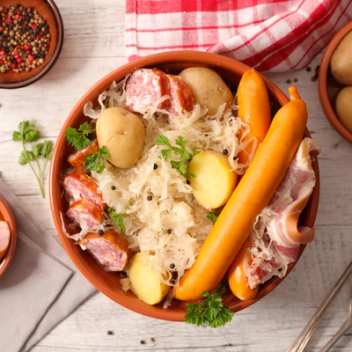
Choucroute
Choucroute (Sauerkraut) - if you haven’t yet discovered the delights of pickled cabbage with pork knuckle and several types of sausage, served on a bed of buttery boiled potatoes, now’s your chance. This is most definitely winter food.
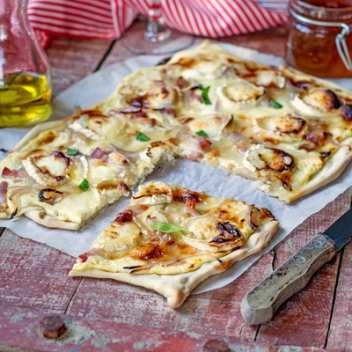
Flammekueche
Flammekueche - which translates as Flambé tart, is so popular there are restaurants dedicated to just this one dish. It’s like a cross between a pizza and a savoury tart, thin flaky pastry topped with cream, onions and bacon and eaten with the fingers.
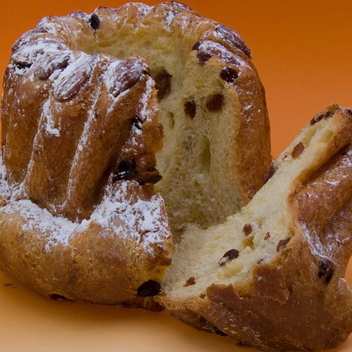
Kougelhopf
Kougelhopf - this distinctively-shaped brioche cake is studded with raisins and almonds, a bit like an Alsatian version of Panettone. A savoury one is also available with bacon and walnut bits. Insider tip: go to the Christian Patisserie behind Place Kléber for the best Kougelhopf.
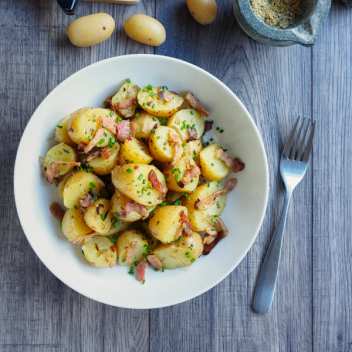
Salade de pommes de terre
Salade de pommes de terre - warm potato salad is a popular side dish, served with ham or smoked shoulder of pork, warming and filling it’s good fuel for a day of sightseeing.
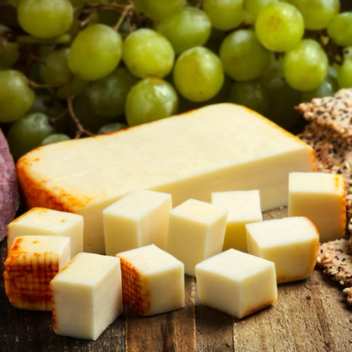
Munster cheese
Munster cheese - with a deceptively mild taste despite its strong smell, this cheese is great cold or melted over boiled or baked potatoes.
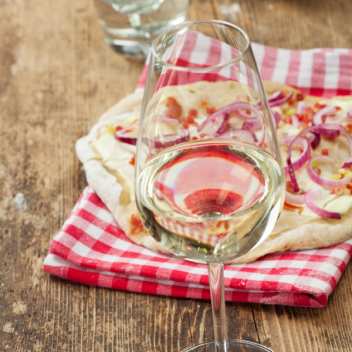
Alsace wines
Alsace wines - the wines from this part of France are very similar to the German whites, using the same type of grapes. Gewurztraminer, Muscat, Riesling and Sylvaner are popular, their fruity freshness cutting well through fatty meats like pork.
Getting around Strasbourg
Though the historic centre of Strasbourg is easily walkable you may want to venture further afield, or just give your feet a rest.
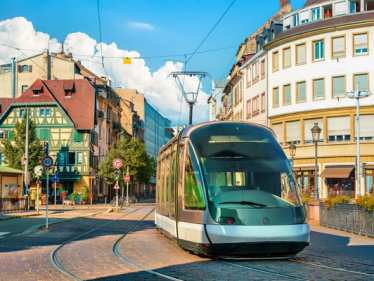
Public transport
Strasbourg has 29 bus routes and seven tram lines which will easily get you around the town and its outskirts very cheaply. The tourist board has put together a map showing how to get to all the main tourist destinations by public transport.
Insider tip: get yourself an Alsa+ 24h ticket , you can even travel to Kehl in Germany for under €5. Take tram C or D to Jean Jaurès and then bus 21 to Kehl Stadthalle, it's only 30 minutes from Strasbourg and the ticket also allows unlimited travel around Strasbourg.
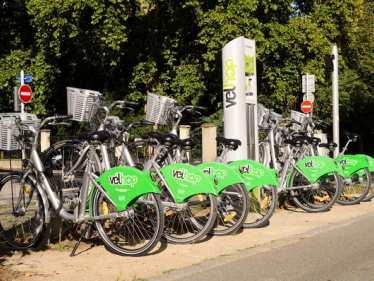
Strasbourg by bike
Strasbourg has a shared bike rental system called VEL’HOP as well as private bike rental companies. It’s a fabulous city to cycle around with 500 kms of cycle paths, especially in the warmer months, though in winter you may find it a bit too chilly unless you have the proper kit.
What's on in Strasbourg
It doesn’t just all happen at Christmas, there’s plenty going on in Strasbourg throughout the year. Here are some of the highlights.
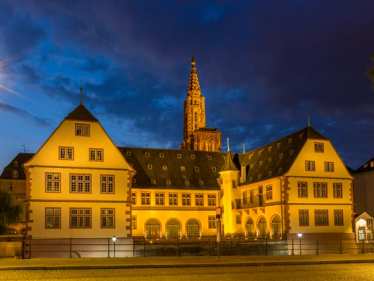
Spring/Summer
March/April
Journées européennes des métiers d'art
May
Nuit des Musees - for one night all the city’s museums are open, free of charge
International Ladies Tennis cup
June
Fete de la Musique - annual national music festival
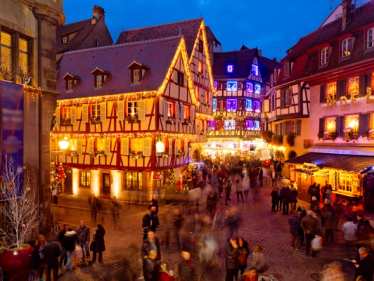
Autumn/Winter
September/October
European Fantasy Film festival
Musica Comtemporary music festival
November/December
Jazz d’Or – European Jazz festival
Christmas market
You may also like
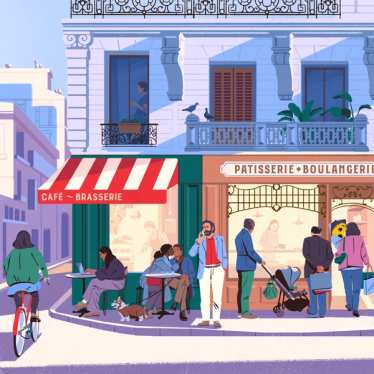
London to Paris trains
Taking the Eurostar from London to Paris is quick, easy and enjoyable. Journey from one world-famous capital city to another in just 2hrs 16 mins.

Eurostar destinations
Between Amsterdam's canals, Paris' botanical gardens, Bruges' architecture, and London's royal parks, Eurostar has something for everyone.
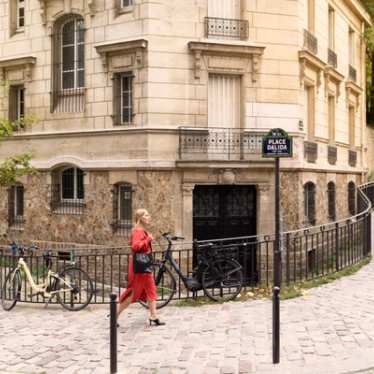
City breaks in Paris
Paris is all about people watching, as you drink coffee on a café terrace.





